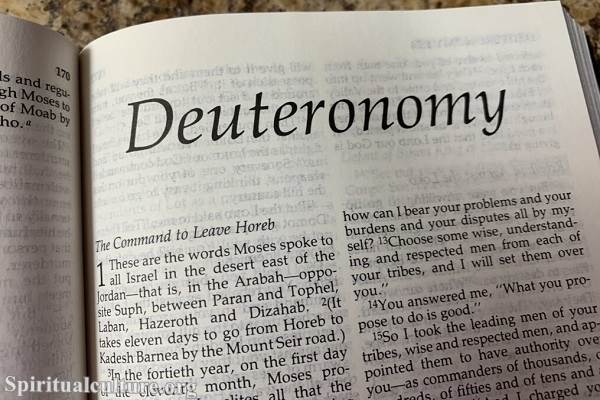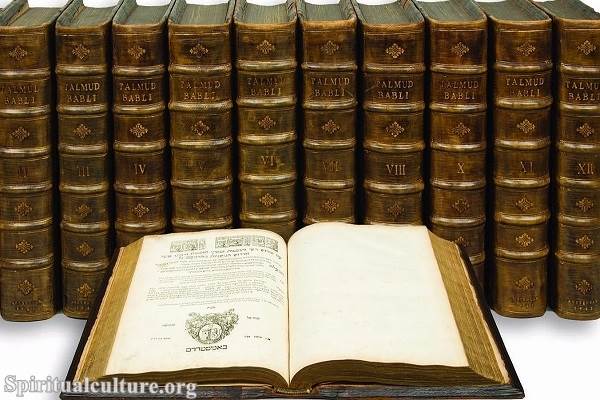The Talmud is not just a book. It is a vast, living library. A dialogue that spans generations. A sacred conversation between rabbis, sages, and seekers seeking to understand how to live faithfully in the world.
To some, it appears as a dense compilation of laws and discussions. To others, it is a spiritual lifeline — a guiding lamp for Jewish life, law, ethics, and identity. But what is the Talmud, really? Where did it come from? And why has it become one of the most important texts in the Jewish tradition?
Spiritual Culture invites you to journey into the heart of this sacred text — to uncover its origins, meanings, and why it still matters, not just for Jews, but for anyone seeking the interplay between divine truth and daily life.
Understanding the Foundations of the Talmud
What Is the Talmud?
The word Talmud comes from the Hebrew root lamad, meaning “to learn” or “to study.” True to its name, the Talmud is a book of learning — not merely a static text, but a vibrant world of inquiry.
At its core, the Talmud is a compilation of rabbinic teachings and debates on the Mishnah (a codified collection of Jewish oral laws) and the Gemara (commentary and discussion on the Mishnah). Together, they form the Talmud.
There are two main versions of the Talmud:
- The Babylonian Talmud (Talmud Bavli) — compiled in Babylon (modern-day Iraq) around 500 CE. This is the most widely studied and authoritative version.
- The Jerusalem Talmud (Talmud Yerushalmi) — compiled in the Land of Israel around 400 CE. Shorter and less studied, but still significant.
Oral Law vs. Written Law
To understand the Talmud’s role, we must first grasp the twofold nature of Jewish revelation:
- The Written Torah — the Five Books of Moses, the foundational sacred scripture.
- The Oral Torah — the body of interpretations, traditions, and applications passed down orally from generation to generation.
The Talmud preserves the Oral Torah in written form. Without it, many commandments in the Bible would remain mysterious. How does one “rest” on the Sabbath? What is a “sign” on the hand or between the eyes? The Talmud fills in these details.
How the Talmud Was Born: A Story of Exile and Preservation
The Destruction That Shaped Memory
After the destruction of the Second Temple in 70 CE, Jewish life was thrust into uncertainty. Without a central Temple, how could one live a Torah-centered life? How could traditions survive in exile?
It was in this context that rabbis began compiling and codifying the Oral Torah — so it would not be lost. This effort gave rise to the Mishnah, compiled around 200 CE by Rabbi Judah the Prince.
Over the next centuries, generations of sages — known as Amoraim — would analyze, debate, and expand on the Mishnah. Their discussions became the Gemara, finalized around 500 CE.
Thus, the Talmud is not the product of a single author, but a multi-generational dialogue stretching across centuries, shaped by the trauma of exile and the longing for spiritual continuity.
What Does the Talmud Contain?
A Multifaceted Work of Law, Ethics, and Spirit
The Talmud is over 6,000 pages long, encompassing diverse subjects:
- Halakhah (Jewish law): Rituals, civil law, criminal law, Sabbath laws, dietary rules
- Aggadah: Moral tales, folklore, theology, mysticism, and reflections on human nature
- Medicine, astronomy, linguistics, trade, and daily life
It is not organized like a modern textbook. Its structure reflects the natural flow of conversation — digressions, challenges, and counterpoints are all preserved.
The Dialectical Method
A hallmark of Talmudic thought is its dialectical style — argument and counterargument, question and response. This method trains the mind to wrestle with complexity and embrace multiple viewpoints.
The sages often disagree — and both sides are recorded. This teaches that truth is rarely simple and that sacred debate itself is a holy act.
As the saying goes in the Talmud:
“These and those are the words of the living God.” (Eruvin 13b)
Why Is the Talmud So Important?
It Preserves Jewish Identity and Continuity
For nearly two millennia, the Talmud has been the spiritual anchor of Jewish life in exile. When the Temple fell and priestly rituals ended, the Talmud provided structure and substance for everyday holiness.
It allowed Judaism to adapt, to be practiced in homes, synagogues, schools, and hearts — even in the absence of a central sanctuary.
It Cultivates Sacred Intellect
The Talmud does not offer easy answers. It demands rigor, logic, imagination, and humility. Studying it is considered one of the highest forms of spiritual engagement.
As it says in the Mishnah:
“Study leads to action.” (Pirkei Avot 1:17)
The Talmud transforms the act of thinking itself into worship — turning the mind into a vessel of divine encounter.
It Forms the Basis of Halakhah
Virtually all Jewish law today — from the Sabbath to kosher practices to marriage and ethics — finds its roots in the Talmud.
Later legal codes (like Maimonides’ Mishneh Torah or the Shulchan Aruch) are built on the Talmud, drawing their authority from its pages.
Without the Talmud, Jewish law as we know it would not exist.
The Talmud as Spiritual Practice
Not Just Study — But Soul Work
Traditional Jewish study of the Talmud is not merely academic. It is a sacred ritual, often done in pairs (chavruta) where two students debate and discuss.
This creates not just intellectual growth, but moral refinement, humility, and deep friendship.
The Talmud itself teaches:
“Who is wise? One who learns from every person.” (Pirkei Avot 4:1)
A Tree of Life for All Generations
For the devout, the Talmud is not just ancient wisdom, but living guidance. A tree of life that continues to grow. In every era, new commentaries are written. New questions are asked.
Each generation adds its voice — and thus becomes part of the eternal conversation.
The Talmud and the Modern World
Can the Talmud Still Speak to Us Today?
Yes — and perhaps now more than ever.
In an age of quick answers and polarized thought, the Talmud invites slow reflection, respectful disagreement, and deep learning. Its pages model a way of thinking that embraces nuance and complexity.
It also invites us to see the sacred in the ordinary — in contracts and cooking pots, in market stalls and prayer halls.
A Source of Wisdom Across Boundaries
Though rooted in Jewish tradition, the Talmud has inspired legal thinkers, philosophers, ethicists, and spiritual seekers across cultures.
Its methodology — careful reasoning, ethical inquiry, compassionate application — has something to teach the wider world.
Reflect and Reimagine
The Talmud is more than a book — it is a mirror of the Jewish soul, a map of its long journey, and a sanctuary for its questions.
To study the Talmud is to step into a river of sacred dialogue. You do not simply read it — you join it. You add your voice to a symphony that has played for centuries.
Whether you are Jewish or not, curious or committed, the Talmud invites you to think deeply, live thoughtfully, and seek truth with others — not alone.
In a time when shouting often drowns out listening, the Talmud offers another way: conversation, care, and sacred complexity.
Let this be your invitation: not just to know what the Talmud is, but to begin — humbly, bravely — to study, to ask, and to grow.
“Turn it and turn it, for everything is in it.” (Pirkei Avot 5:22)




